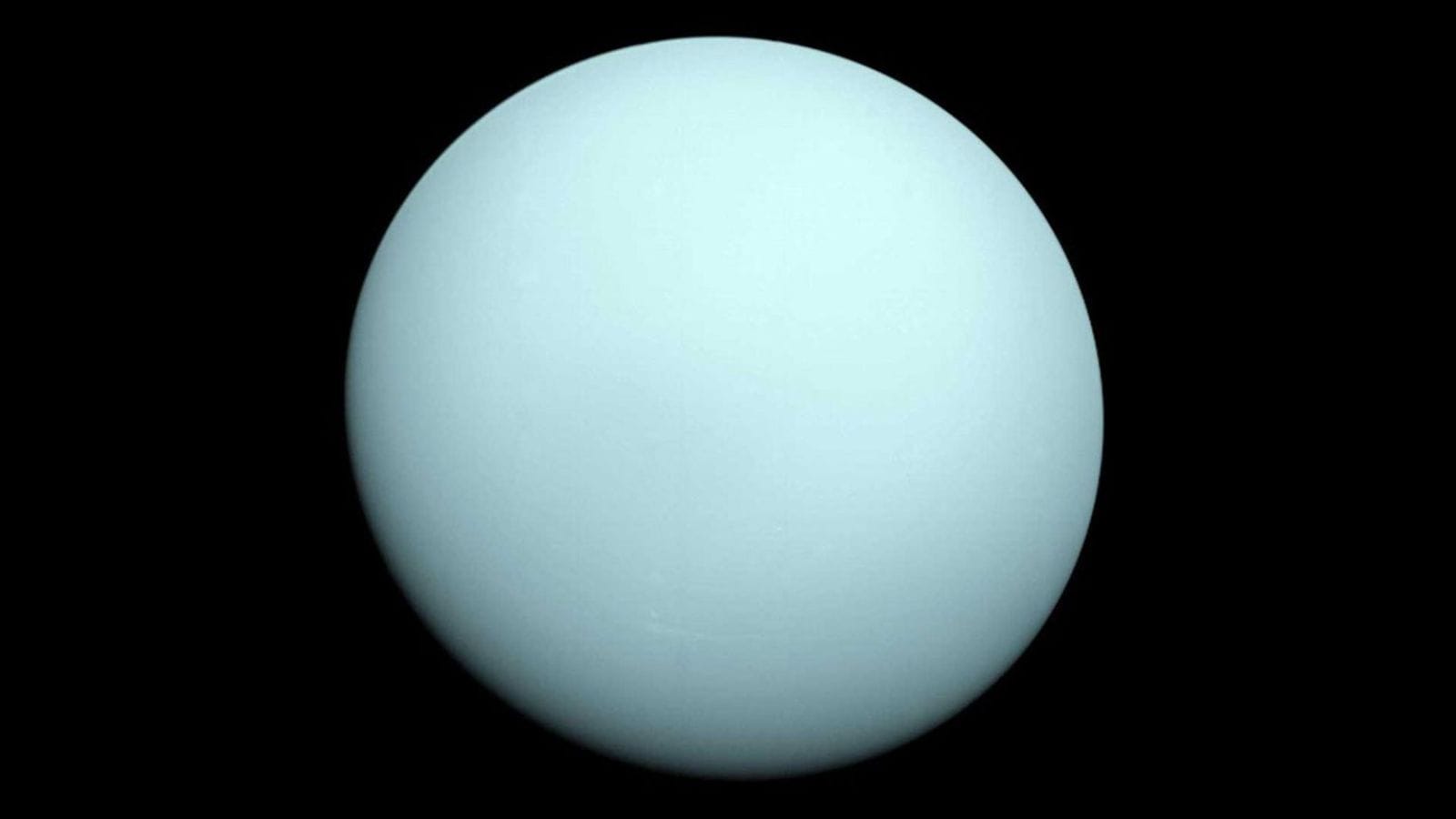Uranus, the seventh planet from the Sun, owes its pale blue-green colour to its atmosphere that absorbs the red wavelengths of sunlight, according to a new study.
The study was published by a research group comprising scientists from the University of Arizona in the United States as well as other institutions. It sheds light on the atmospheric composition and complex dynamics governing the mystery planet. The researchers were able to provide new information about Uranus after analysing images of the planet captured by Nasa’s Hubble Space Telescope over the last 20 years.
The Hubble images of Uranus were taken between 2002 and 2022. As per the study, Uranus’ atmosphere is primarily composed of hydrogen and helium, along with small amounts of methane as well as minute quantities of water and ammonia.
Uranus is located between Saturn and Neptune. As the seventh planet from the Sun, Uranus remains one of the least understood planets in our solar system which is why the new research study may be significant. Scientists who authored the study also provided more information about seasonal changes on the planet. Unlike other planets, Uranus’ axis of rotation is nearly parallel to its orbital plane.
It is likely that Uranus collided with an Earth-sized object, which might be the reason why it is said to be rotating in an ‘overturned’ position. As a result, it takes 84 years for the planet to complete one revolution around the Sun. This means that the surface of the planet gets sunshine for 42 years and the next 42-year-period is dark.
Over the course of the 20-year-long study, researchers were able to observe only a part of the seasonal change of Uranus’ atmosphere.
The research builds on existing information about Uranus, like the fact that the planet is composed mainly of water and ammonia ice. It is approximately 51,000 kilometres in diameter, making Uranus four times bigger than the Earth with a mass that is 15 times greater than that of Earth’s. Uranus also has 13 rings and 28 moons.
Story continues below this ad
Nasa’s Voyager 2 is the only space probe mission that has explored the planet by conducting a flyby in January 1986. However, the group of scientists behind the new study said that they will continue to observe Uranus and gather more information on seasonal changes in its polar regions.
© IE Online Media Services Pvt Ltd








